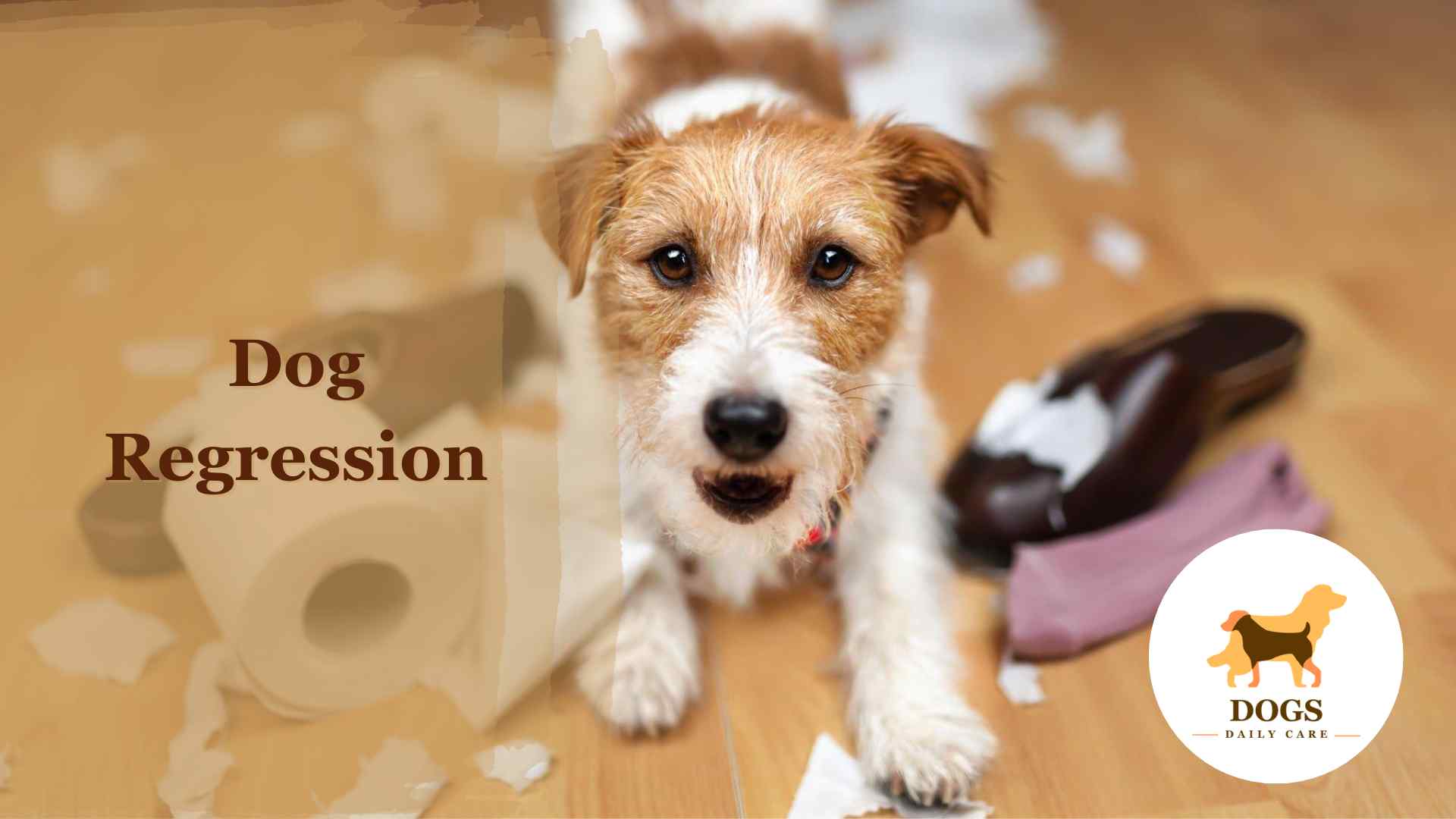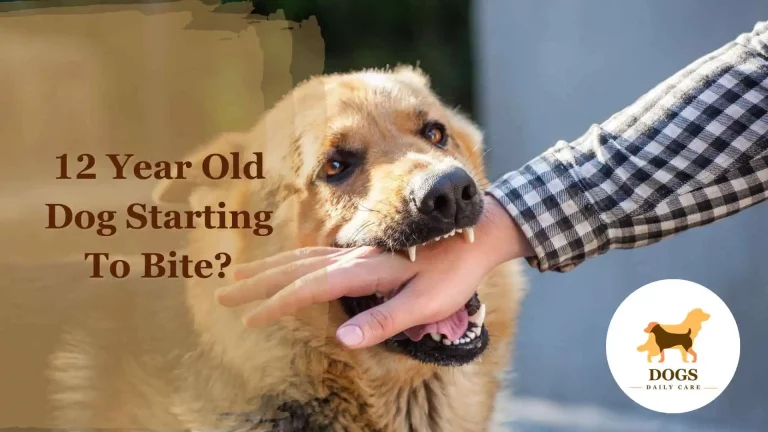Dog Regression – All You Need To Know
Have you ever noticed your furry friend suddenly exhibiting behaviors they had outgrown? Welcome to the world of dog regression, a perplexing yet common phenomenon that many dog owners encounter. Whether it’s a well-trained pup starting to have accidents indoors or a once sociable dog becoming withdrawn, regression can be baffling and worrying.
Understanding what triggers these changes is crucial for every pet parent. In this post, we’ll dive into the causes, signs, and solutions to help you navigate this challenging phase in your dog’s life, ensuring a happy, healthy bond between you and your pet.
Dog regression isn’t just about a lapse in training; it’s a signal that something deeper might be affecting your beloved companion. It’s a journey that requires patience, understanding, and sometimes professional guidance. As we explore this topic further, you’ll gain insights into how to effectively respond to and manage these behaviors, ensuring your dog’s well-being and your peace of mind.
What is Dog Regression?
Ever wondered why your well-behaved dog suddenly starts acting out? This unexpected change is known as dog regression. It’s like your dog is forgetting the training they once mastered. Think of it as a step back in their behavior – a phase where they might start doing things they haven’t done since being a puppy. This can include habits like chewing shoes, barking excessively, or even having accidents inside the house.

But why does this happen? Dog regression can be sparked by various reasons. It might be due to changes in their environment, like moving to a new home, or it could be related to their health. Sometimes, it’s just a part of growing up, similar to how children go through phases. It’s important to remember that this regression is not your dog being stubborn or naughty; it’s a sign that they might need some extra help or attention.
In the following sections, we’ll explore the different causes of dog regression and how you, as a caring pet owner, can effectively address them. Stay tuned to learn how to guide your furry friend back to their best behavior!
Causes of Dog Regression
Wondering what’s behind your dog’s sudden change in behavior? There are several reasons why dogs regress, and understanding these can be a game-changer in helping your pet.
Change in Environment
Just like us, dogs can get stressed by big changes. Moving to a new house, a new family member arriving, or even a change in your daily routine can impact your dog. These changes can make them feel uncertain, leading them to fall back on old habits.
Health Issues
Sometimes, regression is a sign of an underlying health problem. If your dog is in pain or feeling unwell, they might start behaving differently. Issues like urinary tract infections can cause house-trained dogs to have accidents indoors.
Lack of Consistent Training
Dogs thrive on routine and consistency. If there’s a change in how you’re training or if training isn’t consistent, your dog might get confused about what’s expected. This confusion can lead to regressed behavior.
Anxiety and Stress
Dogs are sensitive creatures. Anxiety, fear, or stress can trigger regression. This can be due to loud noises, a scary incident, or separation anxiety if they’re left alone too much.
Understanding these causes is the first step in addressing dog regression. In the next sections, we’ll delve into specific types of regression based on age and other factors, and how to manage them effectively.
Age-Related Regression
As dogs age, their behavior can change. This is normal, but it’s important to understand how and why these changes happen. Age-related regression is different for puppies and senior dogs, but both need your patience and care.
Puppy Regression

Puppies are like kids; they’re learning and growing every day. Sometimes, they might forget their training as they go through different growth stages. It’s like two steps forward, one step back. They might start chewing things or forget their potty training. This is normal. They’re not being naughty; they’re just growing up.
Senior Dog Regression

Older dogs can also show signs of regression. This is often due to their aging bodies and minds. They might start having accidents indoors, become less responsive to commands, or change their eating and sleeping habits. It’s not just ‘old age’ – sometimes these changes can be signs of health issues like arthritis or cognitive decline.
In both cases, understanding and patience are key. Adjusting your training and care to suit their age can make a big difference. In the next sections, we’ll explore how to support your dog through these changes.
Behavioral and Environmental Factors
Dogs, much like people, are influenced by their surroundings and daily routines. Changes in these areas can lead to behavioral regression, but understanding and managing these factors can help your dog adjust and thrive.
Routine Changes
Dogs love routine. Regular walk times, feeding schedules, and play sessions give them a sense of security. When these routines change – maybe due to your new job or a family event – it can confuse them. This confusion can show up as regression in their behavior, like being restless or having accidents inside.
Environmental Stress
Dogs are sensitive to their environment. Loud noises like thunderstorms or fireworks, new pets in the house, or even rearranging furniture can unsettle them. This stress can result in behavior that seems like a step backward. They might bark more, hide, or chew things they shouldn’t.
Social Factors
Dogs are social animals. Lack of social interaction or changes in their social group (like a new pet or a family member moving out) can affect them deeply. This can lead to behaviors like excessive barking, whining, or acting out.
Understanding these factors is vital in helping your dog overcome regression. By maintaining a consistent routine, creating a safe and calm environment, and ensuring they have social interactions, you can support your dog’s well-being and help them return to their usual behavior.
Health-Related Causes
When your dog starts acting differently, it’s essential to consider their health. Sometimes, what looks like a behavioral issue is actually a health problem. Understanding these health-related causes can guide you in providing the right care for your furry friend.
Physical Health Issues
Dogs can’t tell us when they’re in pain or feeling sick. Issues like joint pain, digestive problems, or even dental issues can cause changes in behavior. A dog in pain may become more withdrawn or show aggression. If your usually well-behaved dog starts having accidents inside, it might be due to a urinary tract infection or other health concerns.
Mental Health Matters
Just like people, dogs can experience mental health issues. Stress, anxiety, and even depression can manifest in regressive behaviors. Dogs may become more clingy, or they might hide more and interact less. Older dogs can experience cognitive decline, leading to confusion and disorientation, which can be mistaken for regression.
It’s crucial to watch for these signs and consult with a veterinarian if you notice any sudden changes. Early detection and treatment can make a big difference in your dog’s quality of life. Remember, caring for your dog’s health is a key part of addressing and preventing regression.
Tips for Managing and Preventing Regression
Dealing with dog regression can be challenging, but with the right approach, you can help your dog get back on track. Here are some practical tips to manage and prevent regression, ensuring a happy and healthy life for your furry companion.
Consistency is Key
Stick to a routine. Regular feeding times, walks, and play sessions provide stability for your dog. This consistency helps reduce confusion and anxiety, which can prevent regression.
Positive Reinforcement
When your dog shows good behavior, reward them. Use treats, praises, or their favorite toy. Positive reinforcement not only encourages good behavior but also strengthens your bond.
Training and Socialization
Keep up with training exercises, even if your dog has mastered basic commands. Regular training keeps their mind active and engaged. Also, allow your dog to interact with other dogs and people. Socialization is crucial for their emotional health.
Create a Safe Space
Dogs need a comfortable and secure area in your home. Whether it’s a cozy bed or a special corner, having their own space can help them feel safe and relaxed.
Watch for Stress Triggers
Pay attention to what stresses your dog and try to minimize these triggers. If it’s noise, consider a quieter environment. If it’s loneliness, try not to leave them alone for too long.
Regular Vet Check-Ups
Keep up with regular vet visits. These check-ups can catch health issues early, preventing problems that could lead to regression.
By following these tips, you can play a significant role in managing and preventing regression in your dog. Every dog is unique, so tailor these strategies to suit your pet’s specific needs and personality.
When to Seek Professional Help
Sometimes, despite your best efforts, you might need extra help with your dog’s regression. Knowing when to seek professional advice is crucial for your dog’s well-being.
Persistent Issues
If your dog’s regression behaviors don’t improve with your home efforts, it’s time to consult a professional. This includes continuous accidents indoors, aggression, or anxiety that doesn’t get better.
Sudden Changes
If your dog’s behavior changes suddenly and drastically, it’s important to seek help. This could be a sign of a deeper issue, such as a health problem or severe anxiety.
Health Concerns
If you suspect your dog’s regression is related to a health issue – like pain, loss of appetite, or changes in sleep patterns – a veterinarian should be your first call. They can diagnose and treat any underlying health problems.
Behavioral Experts
For behavioral issues, consider a professional dog trainer or a canine behaviorist. They have the experience and skills to address complex behavioral problems and can provide tailored advice and training plans.
Remember, seeking professional help is not a sign of failure. It’s about doing the best for your dog and ensuring they live a happy, healthy life.
Frequently Asked Questions (FAQs)
1. What are the common signs of dog regression?
Look out for behaviors like increased indoor accidents, excessive barking, chewing on inappropriate items, or changes in eating habits. These can all be signs your dog is experiencing regression.
2. Can changes in the household cause dog regression?
Absolutely. Dogs can be sensitive to changes like a new family member, a different living environment, or even alterations in their daily routine. These changes can lead to stress and anxiety, resulting in regressive behaviors.
3. Is regression normal in older dogs?
Yes, it’s common for senior dogs to experience some regression as they age. This can be due to physical health issues like joint pain or cognitive changes. It’s important to monitor these changes closely and consult a vet for proper guidance.
4. How can I help my dog through a period of regression?
Consistency in routine, positive reinforcement, and regular training are key. Providing a safe and comfortable environment, along with plenty of love and patience, can also help your dog adjust and overcome regression.
5. When should I seek professional help for my dog’s regression?
If your dog’s regressive behaviors are persistent, severe, or accompanied by health concerns, it’s wise to seek professional advice. A veterinarian can rule out health issues, while a dog behaviorist can assist with more complex behavioral challenges.
Conclusion
Understanding and addressing dog regression is a journey that requires patience, insight, and sometimes a bit of professional guidance. Remember, regression is not a sign of a bad dog or a failure in training; it’s a natural part of a dog’s life where they need extra support and understanding.
Whether it’s due to age, environmental changes, health issues, or behavioral challenges, recognizing the signs and knowing how to respond can make a significant difference. As a dedicated dog owner, your role in nurturing and guiding your pet through these phases is invaluable.
In closing, keep in mind that every dog is unique, and so is their path through regression. Stay observant, consistent, and loving, and don’t hesitate to seek help when needed. By doing so, you ensure not just the well-being of your furry friend but also maintain that special bond that makes owning a dog such a rewarding experience.
We hope this guide has provided you with valuable insights and practical tips to help you and your dog navigate any regressions that may arise.







